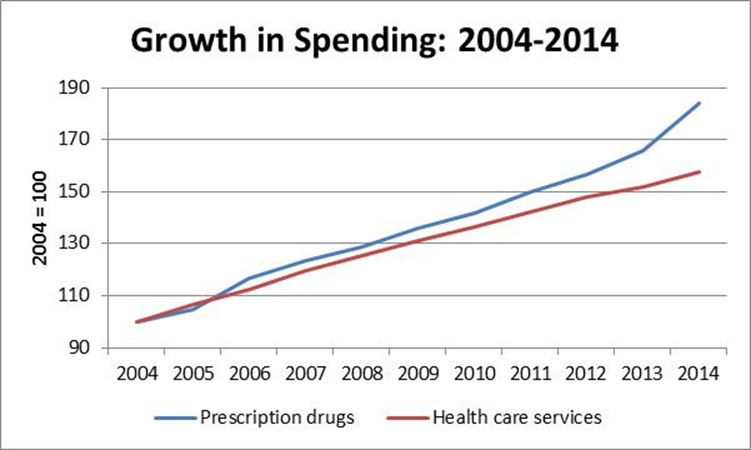September 23, 2015
Your choices are a professor holding a chair endowed by a pharmaceutical testing company and the Bureau of Economic Analysis (BEA). The professor, Darius Lakdawalla, holds the Quintiles chair at the School of Pharmacy at the University of Southern California. In an NYT “Room for Debate” piece on pharmaceutical prices (I was also a contributor), Lakdawalla told readers:
“[D]rug spending has been growing no faster than overall health care spending over the past 10 years.”
That is not what the good people at BEA say. According to the National Income and Product Accounts (Table 2.4.5U) prescription drug spending increased at average annual rate of 6.3 percent over the years from 2004 to 2014, rising from $203.6 billion in 2004 to $374.7 billion in 2014 (Line 122). By contrast, spending on health care services rose at annual rate of 4.7 percent over this period, going from $1240.1 billion in 2004 to $1954.0 billion in 2014 (Line 168). This is shown below.

Source: Bureau of Economic Analysis.
The BEA data seem to be showing a very different story that what Professor Lakdawalla is telling us. In fact, over the last five years the gap in growth rates is even larger, with prescription drug spending rising at a 6.2 percent annual rate and spending on health care services rising at just a 3.7 percent annual rate. That difference could explain why presidential candidates apparently feel the need to talk about the cost of prescription drugs.







Comments